Problem statement
I was wondering whether it's possible to use a coupled inductor (e.g. this) as a signal transformer.
However, these coupled inductors typically have a tradeoff between the ability to store energy in the core (which would then become a vacuum gap, ideally), and the coupling of the coils (which would ideally make the thing an ideal transformer).
In the datasheets, only the inductance in series and parallel configuration are given; is it possible to calculate the Mutual Inductance, and more important, the Coupling Coefficient, from that?
Approach
So, if I'm not mistaken, if we unroll the series configuration, we get:

simulate this circuit – Schematic created using CircuitLab
$$L_\text{series} = L_1 + L_2 + 2M = 2(L+M)$$,
\$M\$ being the mutual inductance, which we see once for every side, hence the factor of 2, and assuming \$L_1=L_2=:L\$.
Solving for \$L\$ yields
$$L = \frac{L_\text{series}}2-M\text. \tag S\label S$$
In the parallel configuration:

We get opposing EMF; thus, M contributes negatively: \begin{align} L_\text{parallel} &= (L-M)||(L-M)\\ &= \frac1{\frac1{L-M}+\frac1{L-M}}\\ &= \frac1{\frac2{L-M}}\\ &=\frac{L-M}2 \end{align}
Solving for \$L\$ yields
$$L = 2L_\text{parallel}+M\text. \tag P\label P$$
Equating \$\eqref{S}\$ and \$\eqref{P}\$:
\begin{align} \frac{L_\text{series}}2-M &= 2L_\text{parallel}+M\\ \frac{L_\text{series}}2- 2L_\text{parallel}&= 2M\\ M&=\frac{L_\text{series}}4- L_\text{parallel} \end{align}
The coupling coefficient becomes
$$k = \frac{\sqrt{L_1L_2}}M \overset{L_1=L_2=L}= \frac LM$$
Question
A sanity check yields near-zero \$M\$ for above linked datasheet, so that \$k\$ could become larger than one.
- What am I doing wrong?
- How to do it right (if possible)?
